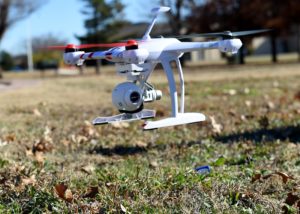
Yesterday, we reported on a new bill from the office of Senator Lee (R-Utah.) The bill could have a major impact on the drone industry, granting state, tribal and local governments complete control over the airspace below 200 feet in altitude and addressing issues that range from recreational flight to drone delivery and drone safety standards. Today, Senator Lee’s office released the following press release to announce the act. The full text of the Act can be read here.
Sen. Lee Introduces Drone Integration and Zoning Act
Oct 16 2019
WASHINGTON – Sen. Mike Lee (R-UT) introduced the Drone Integration and Zoning Act Wednesday, a bill to establish a regulatory framework for drones based on the principles of local governance and cooperative federalism.
“The FAA cannot feasibly or efficiently oversee millions of drones in every locality throughout the country,” Sen. Lee said. “The reason that the states have sovereign police powers to protect the property of their citizens is because issues of land use, privacy, trespass, and law enforcement make sense at the state and local level. The best way to ensure public safety and allow this innovative industry to thrive is to empower the people closest to the ground to make local decisions in real time and that is exactly what the Drone Integration and Zoning Act does.

Miriam McNabb is the Editor-in-Chief of DRONELIFE and CEO of JobForDrones, a professional drone services marketplace, and a fascinated observer of the emerging drone industry and the regulatory environment for drones. Miriam has penned over 3,000 articles focused on the commercial drone space and is an international speaker and recognized figure in the industry. Miriam has a degree from the University of Chicago and over 20 years of experience in high tech sales and marketing for new technologies.
For drone industry consulting or writing, Email Miriam.
TWITTER:@spaldingbarker
Subscribe to DroneLife here.







[…] Senator Mike Lee of Utah introduced a “Drone Integration and Zoning” Act in 2019 that would have designated all airspace under 200 feet under the jurisdiction of state law. […]